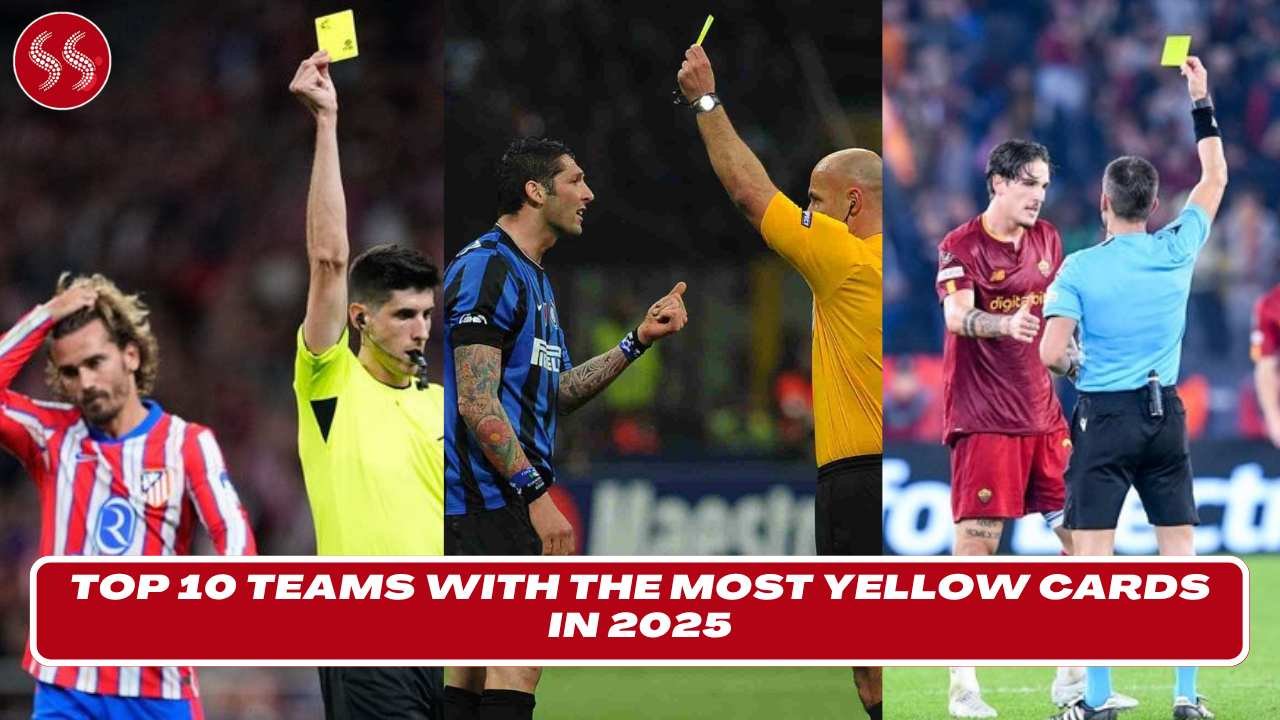Top 10 Teams with the Most Yellow Cards in 2025 takes you deep into the roughest, most intense sides of modern football. This thrilling list uncovers the teams that constantly walk the fine line between aggressive passion and costly indiscipline. From tactical fouls and high-stakes pressure to heated rivalries and controversial decisions, these clubs have racked up the highest number of yellow cards so far this season. Whether it’s gritty defending, relentless pressing, or pure frustration boiling over, discover which squads made discipline a challenge in pursuit of victory.
Each team’s yellow card count tells a unique story—some reveal tactical sacrifices, others point to deeper issues in control or mindset. In this countdown, you’ll explore which leagues are producing the most aggressive teams and which clubs are pushing the boundaries of fair play. With key stats, notable incidents, and standout repeat offenders, we break down why these teams are consistently in the referee’s notebook.
Top 10 Teams with the Most Yellow Cards in 2025 isn’t just a stats list—it’s a raw, exciting look at football’s grittier side. Whether you’re a fan of hard tackles or strategic chaos, this list gives you the full picture of football’s most cautioned teams.
10. Everton – Premier League Roughnecks
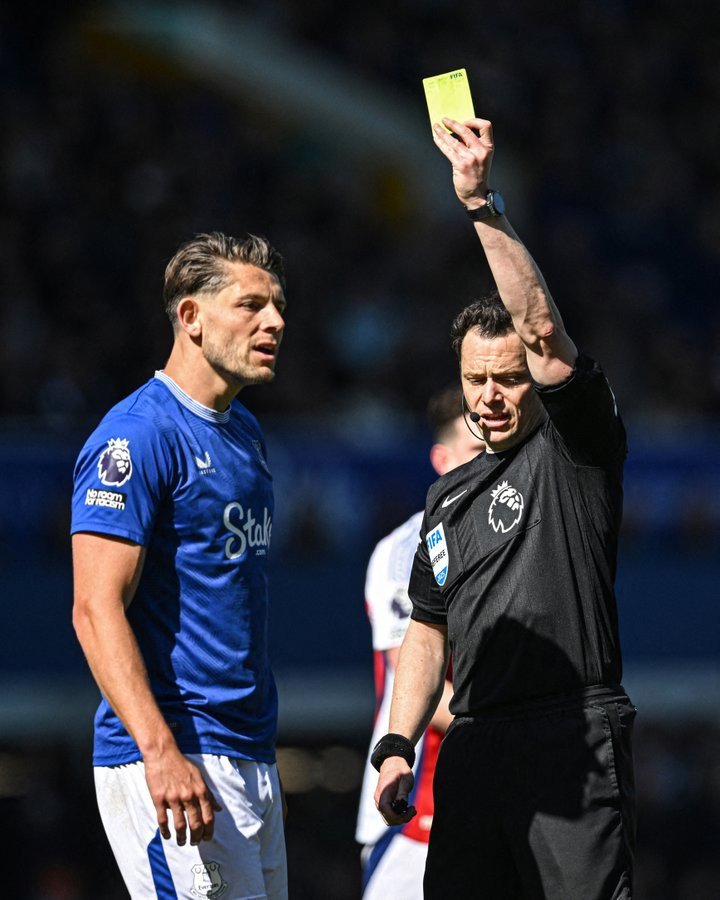
Everton’s 2024–25 campaign was defined by grit, survival instincts, and dogged defensive performances. In a season where every point mattered, Everton turned to intense physicality to hold off relegation threats and push for mid-table security. That aggressive attitude translated into yellow cards—plenty of them. Their high press, fast tempo, and willingness to disrupt opposition rhythm often led them to foul-prone scenarios.
Players like Abdoulaye Doucouré, James Tarkowski, and Amadou Onana found themselves booked frequently as Everton tried to impose themselves against stronger opponents. The Toffees often lived on the edge, with their midfield pressing aggressively and their backline committing necessary tactical fouls. While this physical edge helped keep games tight, it also meant Everton became one of the most cautioned teams in the Premier League in 2025.
The high card count didn’t always work in their favor, though. Accumulations and suspensions caused several headaches for the squad, especially in key matches. Despite that, the team continued to prioritize toughness and intensity—traits deeply embedded in their identity. While some saw the bookings as reckless, others viewed them as a byproduct of a team refusing to be bullied. In the brutal fight for Premier League survival, Everton’s yellow cards were worn like battle scars.
9. Villarreal – The Tactical Disruptors
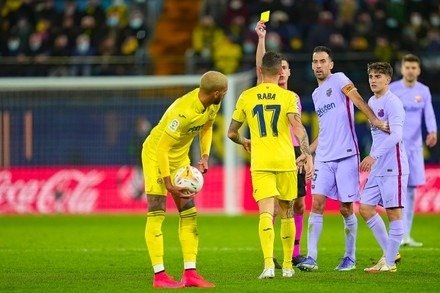
Villarreal’s 2024–25 campaign saw them evolve from a technically gifted side into a tactically disruptive force in La Liga. With key injuries in midfield and defense, the Yellow Submarine relied more on breaking up play and frustrating possession-heavy opponents. That shift in approach came with a heavy price: yellow cards. Whether through persistent fouling, time-wasting, or tactical disruption, Villarreal racked up cautions steadily throughout the season.
Veterans like Étienne Capoue and Raúl Albiol anchored a side that leaned into experience—and physicality. Their match management style often involved calculated fouls to break the opposition’s momentum. While this led to some smart tactical stops, it also raised their disciplinary tally to one of the league’s highest.
Their Europa League campaign didn’t help either. Against stronger European sides, Villarreal’s tenacity turned into desperation, and their card count only increased. By the end of the season, they had firmly established themselves as one of Spain’s most combative sides.
The yellow cards were a double-edged sword: they disrupted opponents but also risked leaving Villarreal exposed due to suspensions. Still, this aggressive edge helped them stay competitive in both domestic and European competitions. It was a risk they seemed willing to take—and one that earned them the 9th spot on this list.
8. Fiorentina – Grit Over Grace
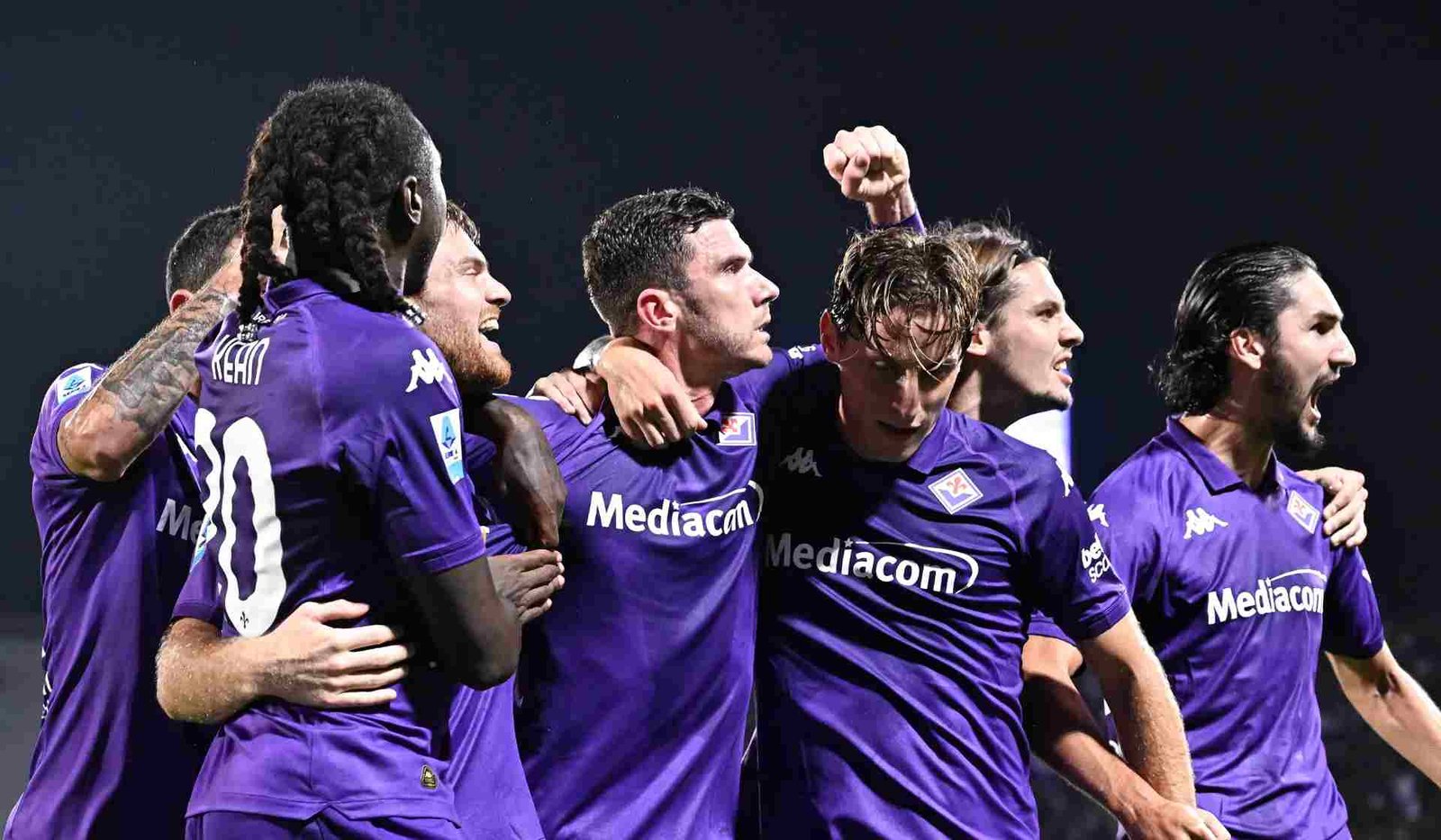
Fiorentina’s football in 2025 has been gritty, emotional, and fiercely competitive. Known historically for flair and fluidity, La Viola embraced a rougher identity under intense pressure from both domestic and European demands. With a congested fixture list and a squad often stretched thin, Fiorentina adopted a no-nonsense defensive approach that prioritized disruption over elegance. The result? A league-topping yellow card count in Serie A.
Their midfield, featuring combative players like Rolando Mandragora and Giacomo Bonaventura, never shied away from a tackle. Defenders were equally unforgiving, often resorting to force to handle high-paced attacks. Fiorentina’s matches were often intense and physical, with fouls and bookings becoming expected features.
While fans appreciated the commitment, opponents and referees viewed them as overly aggressive. The accumulation of yellow cards became a tactical problem, especially during their Conference League push. Suspensions to key players often weakened them at crucial moments.
Still, Fiorentina’s aggression fueled their spirit. Their cards weren’t reckless outbursts but calculated efforts to control the rhythm of matches. It was a gritty transformation that might have cost them points in the short term but showcased their refusal to be outplayed. For better or worse, Fiorentina earned their place among Europe’s most cautioned and combative teams.
7. Leeds United – Chaos in Motion
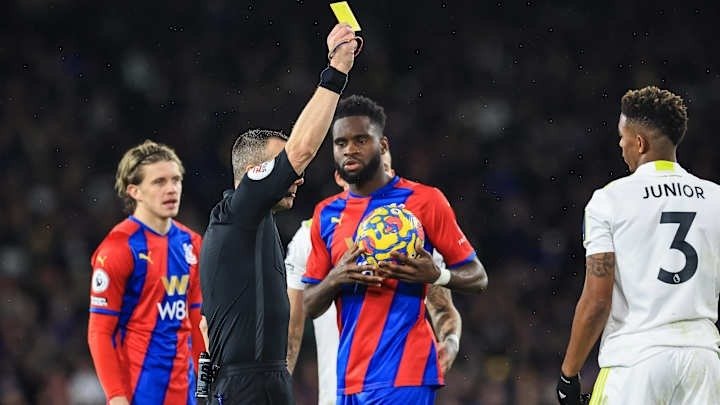
Leeds United in 2025 has been an electrifying mix of chaos, passion, and relentless energy. Whether fighting for promotion in the Championship or holding their ground in the Premier League, one thing remained constant—Leeds played every game like a final. This intensity, while admirable, often turned into aggression, and the referees took note. Leeds ended the season with one of the highest yellow card tallies in English football.
Their high-octane pressing under a bold tactical system saw midfielders and full-backs frequently flying into challenges. Players like Archie Gray, Pascal Struijk, and Ethan Ampadu were ever-present in duels, often testing the boundaries of what the referee would allow. Leeds didn’t back down from any fight—physically or mentally—and it showed in their disciplinary record.
Managerial changes and squad rotation added further instability, contributing to a lack of discipline. Leeds seemed to blur the line between bravery and recklessness. In some matches, their intensity overwhelmed opponents; in others, it cost them dearly with unnecessary fouls, stoppages, and suspensions.
Yet, for the Elland Road faithful, those yellow cards symbolized a team willing to bleed for the badge. Leeds embraced their identity as gritty underdogs, and their caution count was a natural consequence of their uncompromising, all-guns-blazing approach.
6. Real Betis – Passion Meets Pressure
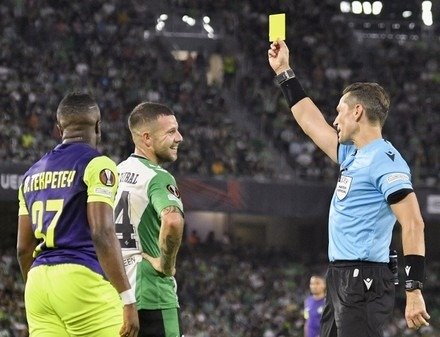
Real Betis’s 2024–25 season was a rollercoaster defined by emotion and intensity. With Manuel Pellegrini aiming to guide the club back into the Champions League, Betis approached each match with urgency—and sometimes, a little too much fire. The result was a massive yellow card haul that placed them among Spain’s most frequently cautioned teams.
The midfield, anchored by Guido Rodríguez and William Carvalho, often found themselves caught in the middle of fast breaks or tight midfield battles. Betis liked to control tempo, but when outpaced or pressed, they resorted to tactical fouling to regain control. Their full-backs, frequently overlapping, were also prone to mistimed tackles when caught in transition.
Adding to the issue was the emotionally charged atmosphere in many of their matches. Derbies against Sevilla, high-stakes games against Atlético or Real Madrid, and late-season European pushes saw Betis flirt with boiling points often. Cards came from dissent, time-wasting, and heated confrontations, not just tackles.
Despite the high caution count, Betis never lost their identity—a spirited, passionate team that plays with flair and heart. Their yellow cards reflected a willingness to fight for every blade of grass. In a league full of precision, Betis played with soul—and they paid for it in the referee’s book.
Also Read:
- Top 10 Teams with the Most Penalty Goals Scored in 2025
- Top 10 Teams with the Most Draws in 2025: The Season of Stalemates
- Top 10 Teams with the Highest Number of Losses in 2025
- Top 10 Teams with the Most Wins in 2025
5. Napoli – Champions Turned Combatants
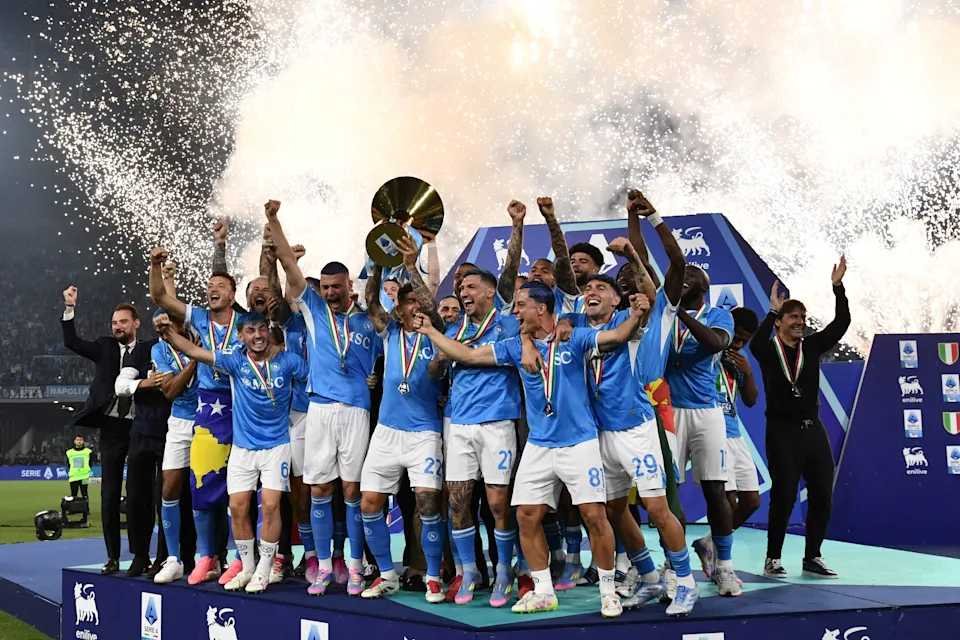
After their 2023 title glory, Napoli’s 2024–25 season brought a much different story—one filled with frustration, transition, and mounting pressure. As the Scudetto defense faltered, Napoli’s playing style grew noticeably more aggressive. That frustration spilled onto the pitch, and the yellow cards followed. Napoli racked up one of the highest caution counts in Serie A, driven by a team caught between identity crisis and tactical evolution.
Midfielders like André-Frank Zambo Anguissa and Piotr Zieliński frequently found themselves in the referee’s book for tactical fouls. Their defenders, struggling with compactness and positioning, often resorted to shirt-pulling, late tackles, and dissent in high-pressure matches. Napoli no longer dominated with style but instead survived with scrappy determination.
European competition only amplified their struggle. Against top-level opposition, Napoli’s defensive line committed more fouls, chasing pacey forwards and pressing with desperation. Their cards reflected a team trying to recapture control—and occasionally losing it entirely.
Despite the rise in bookings, Napoli’s yellow cards weren’t purely reckless. Many were tactical, meant to slow play and regroup. Still, fans were left wondering if this rougher edge signaled resilience or a loss of the club’s attacking soul. Either way, Napoli’s card total left no doubt: the champions were in the fight—literally.
4. Inter Milan – Disciplined Yet Dangerous

Inter Milan’s 2025 campaign was a blend of structure and physical dominance. Though known for tactical discipline under Simone Inzaghi, the Nerazzurri weren’t afraid to get their hands dirty when needed. Their yellow card count surged as they navigated tight Serie A title races and deep Champions League runs, facing relentless opposition that demanded aggressive resistance.
Inter’s three-at-the-back formation invited high-risk defending on the flanks. Wing-backs like Denzel Dumfries and Federico Dimarco often faced one-on-one duels that led to clumsy fouls and cautions. In midfield, Nicolò Barella and Hakan Çalhanoğlu pushed hard for control, walking a fine line between assertive and excessive.
Despite a reputation for elegance in possession, Inter understood the value of a “smart foul”—especially to stop counterattacks. Their yellow cards often came from necessary tactical infractions rather than emotional outbursts. That said, the pressure of title contention sometimes boiled over in clashes with referees or rivals, inflating their disciplinary record.
What makes Inter’s place on this list unique is the balance: they fouled with purpose. They didn’t collapse into chaos but used cards as a tool. Still, the numbers don’t lie—Inter’s pursuit of glory in 2025 came at a cost, and it was frequently paid in yellow.
3. AS Roma – Heat, Hustle, and Havoc
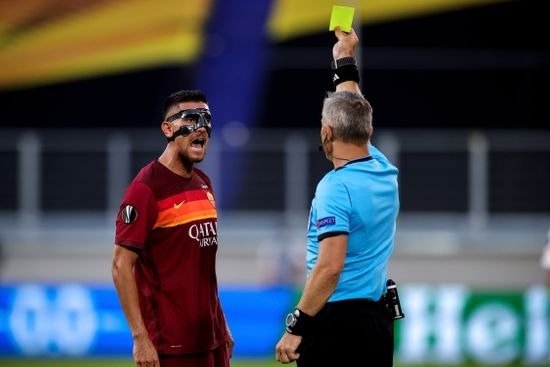
Roma’s 2024–25 season felt like it was played on a knife’s edge. With Daniele De Rossi on the sidelines and a fanbase hungry for progress, the Giallorossi charged into every match with passion and edge. That fiery spirit helped them push through Europe and stay competitive in Serie A—but it also made them one of the most yellow-carded teams in Italy.
Roma’s midfield, spearheaded by Bryan Cristante and Leandro Paredes, became known for crunching tackles and no-nonsense interventions. The backline, featuring Gianluca Mancini—a walking yellow card machine—added to the team’s aggressive identity. Even attackers like Paulo Dybala weren’t immune from collecting bookings, often for dissent or overzealous pressing.
The Stadio Olimpico crowd seemed to feed off the intensity. Every challenge had weight, every foul carried fire. Roma thrived in chaos, but their inability to cool down also hurt them in tight matches where suspensions played a role.
Their yellow cards weren’t just symptoms of recklessness—they reflected a mentality of war. Roma didn’t fear confrontation; they welcomed it. That fearless but combustible energy made them captivating—and costly. Their place in the top three of this list is no surprise. Roma didn’t just play football in 2025—they battled for it.
2. Sevilla FC – Emotion Over Control
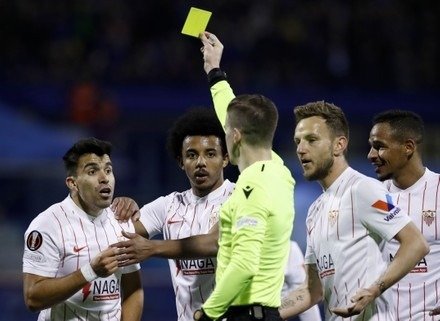
Sevilla FC’s 2025 season was a storm of emotions. Whether battling for La Liga points or navigating another grueling European campaign, Sevilla embraced confrontation. Their aggressive, high-press style brought drama and tension to every match, and their staggering yellow card total confirmed what fans already knew—Sevilla played on the edge.
Defenders like Loïc Badé and Marcos Acuña frequently pushed the limits with late tackles and professional fouls. Midfielders such as Fernando and Joan Jordán anchored a combative engine room, where sliding tackles and persistent fouling became standard practice. Sevilla weren’t careless—they were assertive, and at times, just plain furious.
Their intense atmosphere at the Ramón Sánchez Pizjuán often turned fiery. Players fed off the crowd’s energy, but that passion sometimes boiled over into dissent or aggressive reactions to referee decisions. Sevilla’s caution tally wasn’t just tactical—it was emotional.
While their physicality gave them an edge in key matches, the number of suspensions they endured also hurt their depth. But for Sevilla, discipline was often sacrificed in the name of commitment. They didn’t want to simply win—they wanted to outfight every opponent. That mindset placed them just shy of the top spot, but easily among the most intense squads of 2025.
1. Atlético Madrid – Kings of Caution
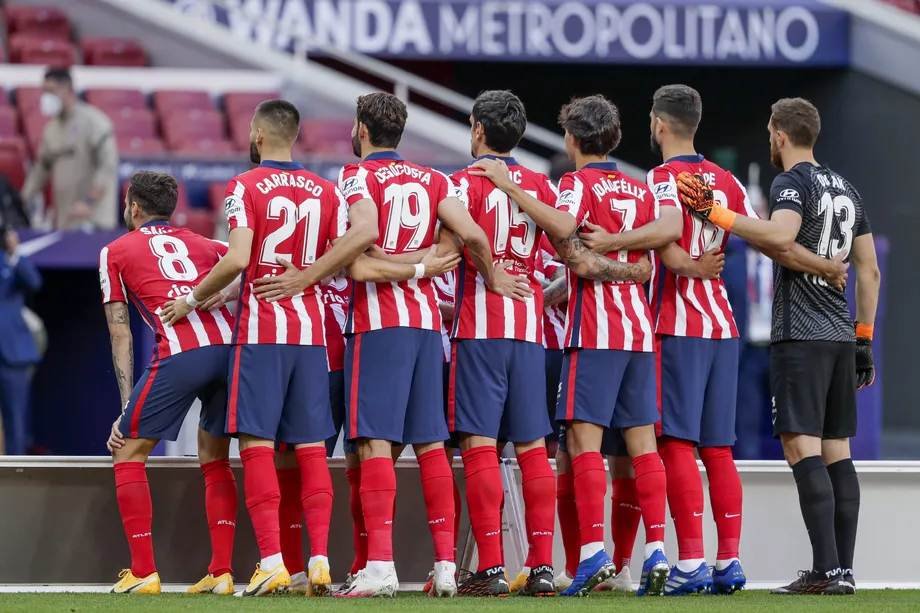
At number one, unsurprisingly, stands Atlético Madrid—the undisputed masters of the yellow card. Diego Simeone’s side didn’t just flirt with the edge of physical play; they married it. With a tactical philosophy rooted in intensity, control through disruption, and absolute mental warfare, Atlético finished 2025 with the highest number of yellow cards across Europe’s top leagues.
Every match was a battlefield. From defenders like José María Giménez to midfield battlers like Koke and Rodrigo De Paul, no one in red and white hesitated to take a card for the cause. Atlético saw yellow cards as part of the strategy—a means of halting counterattacks, slowing play, and frustrating opponents.
Their discipline record was not a sign of recklessness but an emblem of identity. They fouled with purpose, argued with fury, and played with relentless fire. Even their forwards pressed with intensity that often resulted in bookings. Referees became familiar with Atlético’s signature blend of controlled chaos and psychological pressure.
Despite the risk, this combative style worked. They remained defensively resolute, difficult to break down, and infuriating to play against. In the book and in battle, no team received more cards than Atlético Madrid in 2025. And knowing Simeone, they wouldn’t have it any other way.
FAQ’s:
Why do some teams accumulate more yellow cards than others?
Yellow card totals often reflect a team’s tactical style, intensity, or emotional temperament. Clubs that play with high pressing, aggressive defending, or rely on tactical fouling to stop counterattacks tend to accumulate more cautions. Others may receive more due to heated rivalries, disciplinary lapses, or even leadership styles that encourage “playing on the edge.” It’s not always a sign of poor discipline—sometimes, it’s a strategy.
Do yellow cards impact a team’s overall performance during a season?
Absolutely. Accumulating yellow cards can lead to suspensions, breaking a team’s rhythm by forcing squad rotation. It can also affect player confidence and decision-making in crucial matches. However, for certain teams—like Atlético Madrid or Roma—controlled aggression is a fundamental part of their tactical DNA. While it can hurt in the long run, it’s often a calculated risk that supports their overall strategy.
Are yellow cards always a sign of reckless or dirty play?
Not necessarily. Many yellow cards are tactical—used to stop a dangerous attack or slow the game down. Others may stem from dissent or time-wasting. While repeated cautions can indicate a lack of discipline, they can also show commitment, leadership, or a team’s refusal to be passive under pressure. Context matters in interpreting any caution statistic.

